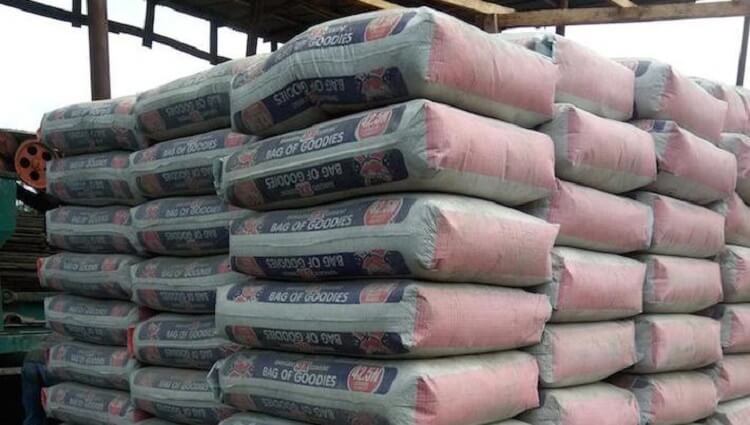Nigeria’s cement industry continued to face mounting operational pressures in the first nine months of 2025 as Dangote Cement Plc and BUA Cement Plc, the country’s two dominant producers, spent a combined N682.39bn on energy costs.
The surge in expenditure, up 7.24 per cent from the N636.27bn recorded in the corresponding period of 2024, reflects the intensifying effect of persistent inflation, steep foreign exchange volatility and the broader rise in input costs on manufacturers.
Energy spending remained the most significant component of production costs for both players, deepening pressure on profit margins despite notable revenue growth recorded during the period.
An analysis of the companies’ financial statements shows that energy costs accounted for 17 per cent of their combined N4.013trn revenue for the nine-month period, compared with N3.143trn in 2024.
When measured against total production expenses, energy outlays consumed 39.79 per cent of the firms’ collective N1.715trn cost of sales, underscoring the weight of power and fuel requirements in cement manufacturing.
Economists and market analysts attributed the rising cost burden to renewed inflationary pressures, the continued depreciation of the naira, and adjustments linked to key macroeconomic reforms such as fuel subsidy removal and the unification of the foreign exchange market.
Advertisement
These factors have driven up the prices of imported inputs, diesel, gas and other essential energy sources, tightening margins and forcing manufacturers to explore cost-reduction strategies.
Despite these constraints, Dangote Cement delivered one of its strongest earnings performances to date. The company posted a profit after tax of N743.3bn for the nine months ended September 2025, a significant rise from the N279.1bn recorded in the same period of 2024.
Revenue grew by 23 per cent to N3.15trn, supported by higher sales volumes across Nigeria and regional markets. Gross profit rose to N1.87trn from N1.32trn, while operating profit expanded by 63 per cent to N1.23trn.
Profit before tax more than doubled to N1.04trn from N406.4bn posted a year earlier. Dangote Cement’s energy bill stood at N568.97bn for the period, up from N534.83bn in 2024, representing 44.24 per cent of its N1.27trn cost of sales.
In line with the industry trend, BUA Cement Plc also recorded substantial growth in earnings. The company reported a profit after tax of N289.9bn, a strong jump from the N48.97bn posted in the same period of 2024.
Advertisement
Revenue rose by 47 per cent to N858.73bn, driven largely by improved sales volumes and significant foreign exchange gains. BUA’s gross profit increased to N429.26bn from N180.81bn, while profit before tax rose to N338.57bn compared to N61.75bn in the previous year.
Earnings per share surged to 855.93 kobo from 144.61 kobo in 2024. The company’s energy costs climbed to N113.42bn from N101.45bn a year earlier, representing 26.41 per cent of its N429.47bn total cost of sales.
Commenting on the financial performance, Dangote Cement’s Chief Executive Officer, Arvind Pathak, said the company’s resilience demonstrates the effectiveness of its operational efficiency programme and its continued regional market expansion.
He identified the commissioning of a 3Mta grinding plant in Côte d’Ivoire as a major milestone that has strengthened the firm’s continental footprint. Pathak added that initiatives such as optimised energy sourcing, cost management, and the phased deployment of 1,600 CNG-powered trucks have supported both operational stability and sustainability goals.
Export volumes also rose by 23 per cent, driven by clinker shipments to markets such as Ghana and Cameroon.
On the outlook for BUA Cement, analysts at Afrinvest West Africa Limited said the company remains on course to meet its N1.2bn full-year profit projection for 2025.
Advertisement
They pointed to its strengthened balance sheet, effective foreign exchange management, and improved liquidity position as evidence of its financial robustness. Afrinvest noted that BUA’s ongoing debt reduction and smarter capital allocation strategies continue to reinforce its long-term competitiveness.
Nigeria’s cement sector has maintained a strong foothold despite macroeconomic challenges, supported by domestic demand estimated at nearly 30 million tonnes annually, as well as growth in infrastructure projects, real estate development and rapid urbanisation.
However, sustained increases in energy costs, rising inflation and currency instability remain major threats to industry profitability. Manufacturers have continued to deploy strategic investments, improve energy efficiency and adjust prices to offset higher costs.
Looking ahead, the cement industry is expected to maintain its growth trajectory, although operators will likely continue to navigate a volatile economic landscape. As producers diversify energy sources, expand inland and regional distribution networks and deepen operational efficiencies, the ability to manage cost pressures will remain central to sustaining profitability and competitiveness.

